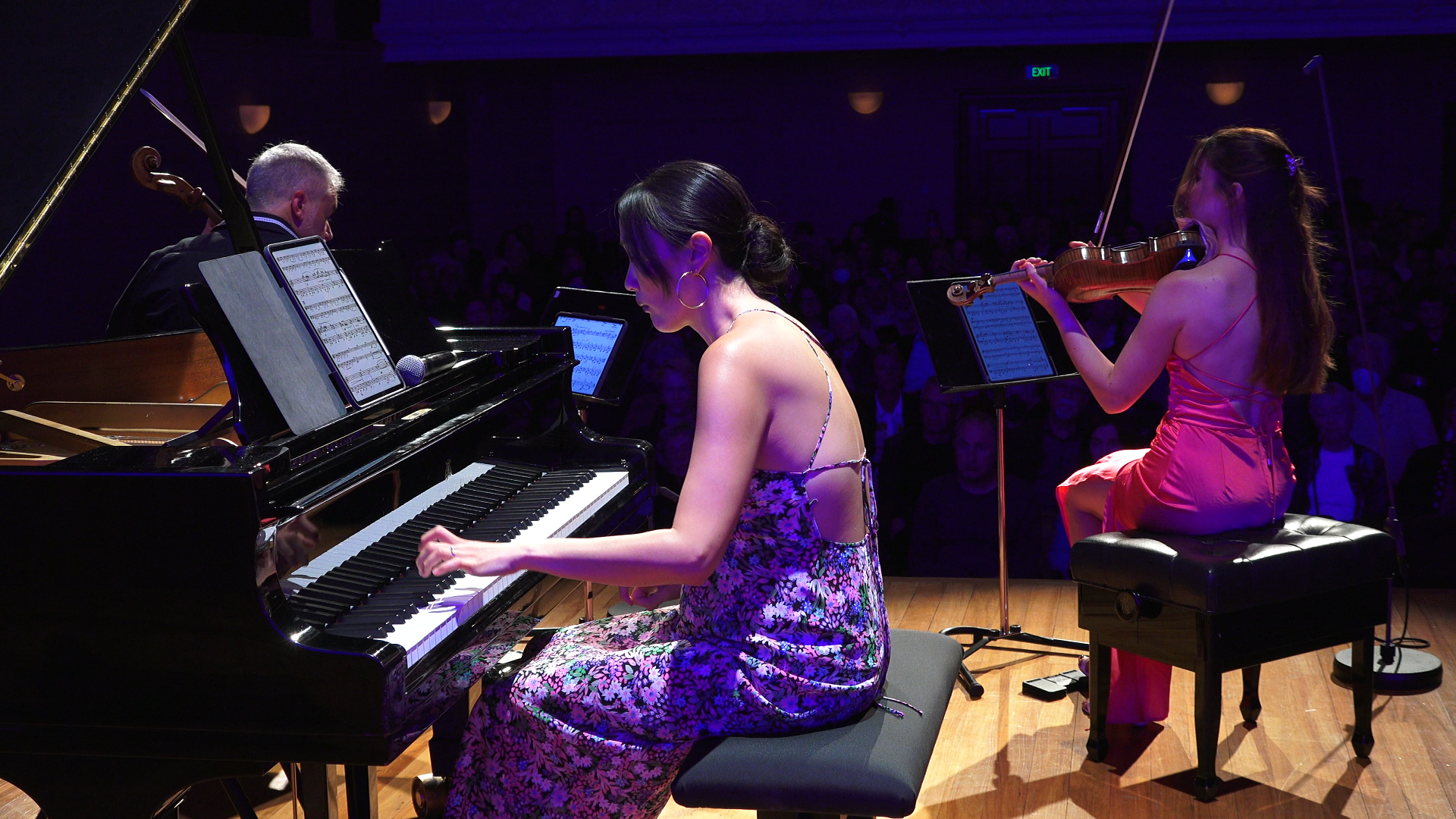寻山 Searching for the Mountain (2022) – c. 15′
Feng Zheng/Kite, written for piano trio and guzheng (2016) – c. 19′
Su Xie Si Ti/Four Sketches (2009) – c. 10′
寻山 Searching for the Mountain (2022) – c. 15′
Feng Zheng/Kite, written for piano trio and guzheng (2016) – c. 19′
Su Xie Si Ti/Four Sketches (2009) – c. 10′
寻山 Searching for the Mountain
Since The Mountain, a duo-piano work written in 2004, the imagery and symbolism of mountain became seemingly inseparable from my musical thought. I feel there is a kind of metaphysical communication with the mountains, but I also physically confront mountainous places when opportunities arise.
Mountains move me deeply, and inspire me just as much. During the summer of 2021, I travelled with friends to the Ganzi Tibetan area in the west of Sichuan. On our returning journey, we accidentally made a stop in a place where we met and conversed with some locals. Being urged and guided by them, we made a 40 minute drive curving along some dazzling cliffs, finally arriving at the top of a wild mountain. Standing at the summit, with its panoramic view and several famous peaks in great distance bathed in the twilight, all of us were stunned, sighing with astonishment. Next morning, we started off again in the dark at dawn making a repeat visit. When we reached the place, the sun was just starting to rise, gradually illuminating surrounding hills. The wild flowers that spread out in all directions, the pristine and rejuvenating chill of the morning air, all brought out in us another round of cheering and sighing! The local man who led the way told me that the place was called, in Tibetan, Jia-bu-si-jue, meaning “the path to the sacred mountain.” The way to great heights is often difficult, and a great view is never reached without complex curves and bumps on the way. This is the solemnity of a mountain, and also its fascination. No wonder, almost in all cultures, mountains evoke in people a sense of sacredness. Searching for the Mountain was written under the effect of the memories of these journeys. The work, however, tries neither to narrate nor depict, though, for me, the music is, in an indescribable manner, permeated with all the impressions from that unforgettable experience.
In 2022, the NZTrio is celebrating its 20th anniversary. I made the work a dedication to this outstanding and aspiring ensemble, as a way of expressing praise, as well as mutual encouragement.
This new commission is generously supported by the Nicholas Tarling Charitable Trust.
Feng Zheng (Kite)
The Chinese invented the kite. Being made of paper and resembling the shape of a hawk, it was originally called “the paper hawk”. In ancient times, a bamboo tube was installed at the tail of the kite which made a Zheng-like sound when wind passed through it. Therefore, it is also called Feng Zheng (Wind Zheng) a term that is commonly used now.
Kites used to be flown often in the Qingming festival – a time when the Chinese pay respect to their deceased family members and ancestors. The kite is the carrier of their best wishes to the dead. The spiritual yearning in addition to the rigorous physical activeness gives kite-flying a feeling of tenderness that is also robust and healthy.
Gao Ping writes: “My ‘Wind Zheng’ is dedicated to a dear friend who is no longer with us, Jack Body, the great New Zealand composer. I have entrusted my emotions for Jack to the wings and sounds of the kite. A motive made of Jack’s name (jACk BoDy)) appears in the beginning and the end of the piece. Is it possible that Jack would meet my free drifting kite somewhere?”
Su Xie Si Ti
The work has 4 short movements each with a subtitle –
1. Xiao (Boisterous)
2. Cuo Diao (Split Melody)
3. Dui Wei (Counterpoint)
4. Shuo (Shining)
As the movements are short and concise, they possess one single mood, and often one single musical idea. They are like snapshots of moments in memory. In fact, some of them are indeed musical translations of scenes from my experience, for example, Counterpoint was inspired by seeing a village funeral procession in rural China. The family members of the deceased progressed slowly, interrupted by frequent kneeling down and crying (which can be both a formal part of the ritual and an expression from the heart), while a band of very odd mixture of Western and Chinese instruments (such as a trombone and a Suona, a Chinese double-reed instrument) led the way by playing very upbeat happy music. It is not surprising as funerals in China are referred to as “the White Happiness”, while weddings are the red counterparts.
Gao Ping writes: “In my music, the two moods are in counterpoint creating a synthetic mood of the happy and sad. Cuo Diao, split melody, or wrong key, (Movement 2) is an isorhythmic love song in which notes in the tune are playfully replaced by ‘wrong notes’ which are not from the tune or its mode. These erroneous notes, however, later little by little form a transposition of the original tune in higher register.”
Su Xie Si Ti was commissioned by the 2009 NZ Music Educator’s Conference for NZTrio, through funds provided by Creative New Zealand.

